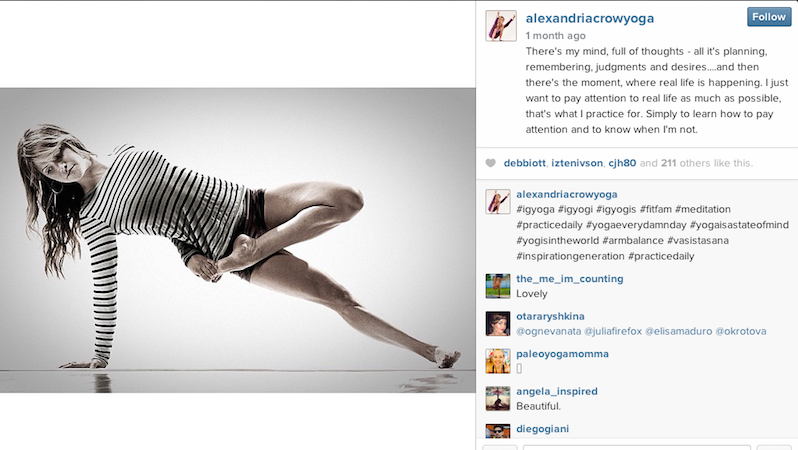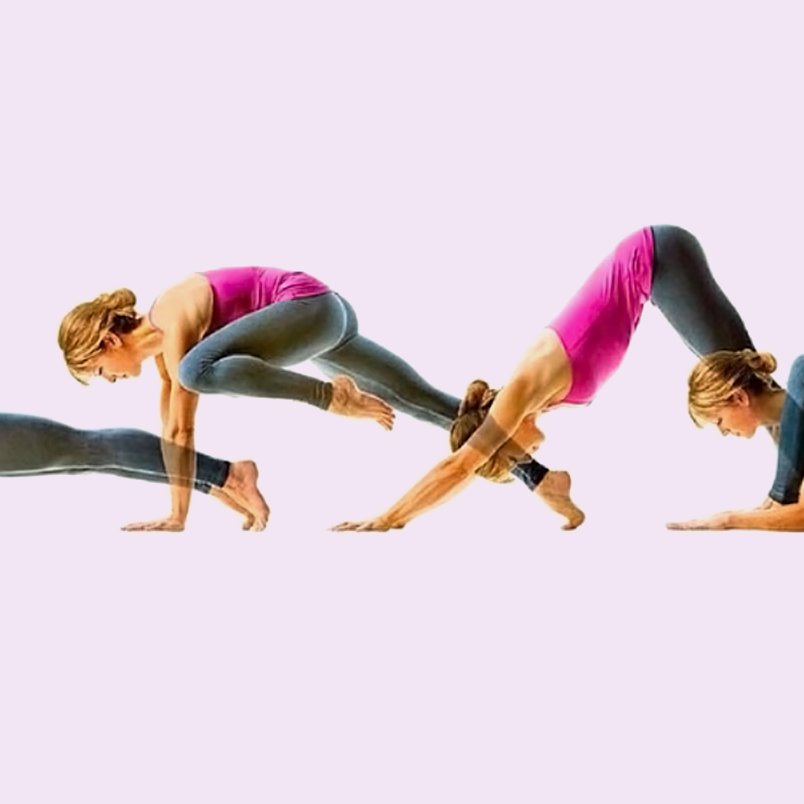![]()
Patanjali Never Said Anything About Yoga Selfies
Originally posted by Yoga Journal on October 28, 2014
I love Instagram. I adore the community and having the opportunity to interact with it. I follow photographers, fashionistas, videographers, designers, news outlets, artists, and of course, yogis. Their posts often inspire me creatively, make me laugh hysterically, and warm my heart. It’s the only social media that I really like.
It was my dad actually who showed me, though, that the very images that I saw as strengthening the community also weaken it. “I’ll never be able to do yoga,” he said, pointing to photo of me. I asked why not. “I am 65 years old and I’m not flexible,” he said. “I’m not going to be able to tie myself up like a pretzel or learn how to do a handstand, nor do I want to.”
I was taken aback to learn that after all the years I’d been teaching he still thought yoga was just about how well you could do fancy poses. And then I realized that a lot people probably don’t see #inspiration and #yogalove in all the stunning images on social media but something more like #wtf #nothanks.

What You Can’t See In a Selfie
The problem, of course, is that a pretty pose pic doesn’t even scratch the surface of what yoga really is. Over the next couple of hours I gave him a lecture, covering everything but asana. I told him about concentration, being in the moment, untangling your ego, working hard to burn through bad patterns so you can replace them with wise ones, and trying to find ease in this impermanent world.
Then I explained how the poses are really a vehicle to teach all that philosophy: Because some poses seem easy and some seem hard, your ego often gets involved and labels which ones you like and which you don’t. It also sometimes encourages you to try to keep up with the person next to you and leads to injury. It’s also there, telling you to give up, when a pose scares you or intimidates you. By learning to pay attention to your tendencies on the mat you can learn a lot about what you do off of it in your regular life when faced with similar challenges, I told him.
Then I told him he could get all those same benefits without ever stepping on a mat and doing what we consider “asana.” I explained that by learning to meditate he could gain all those same insights, learn to pay attention in the moment, ignore the thoughts that are useless, and keep the ones that are wise and helpful. He was thoroughly intrigued and asked me to teach him how to meditate and provide him with a plan on how to work on this yoga thing. I was thrilled.
“Yoga Is Now”
Patanjali’s first sutra pretty much says it all. My favorite translation of it is: “Yoga Is Now.” He doesn’t say, “Yoga Is Asana” or “Yoga Is Crow Pose,” he says it’s “Now.” Being here now—not in the throes of your mind’s painful stories, judgments, and patterns—that’s it. Since none of us can be here now all the time, we need practice to strengthen our skills of concentration first. The poses help us do that. When it becomes easier to see our minds’ stories and patterns, we can begin to eliminate the parts that cause suffering and amplify the parts that bring us ease, presence, and connection to ourselves and to others. That’s yoga.
To keep reading visit YogaJournal.com






